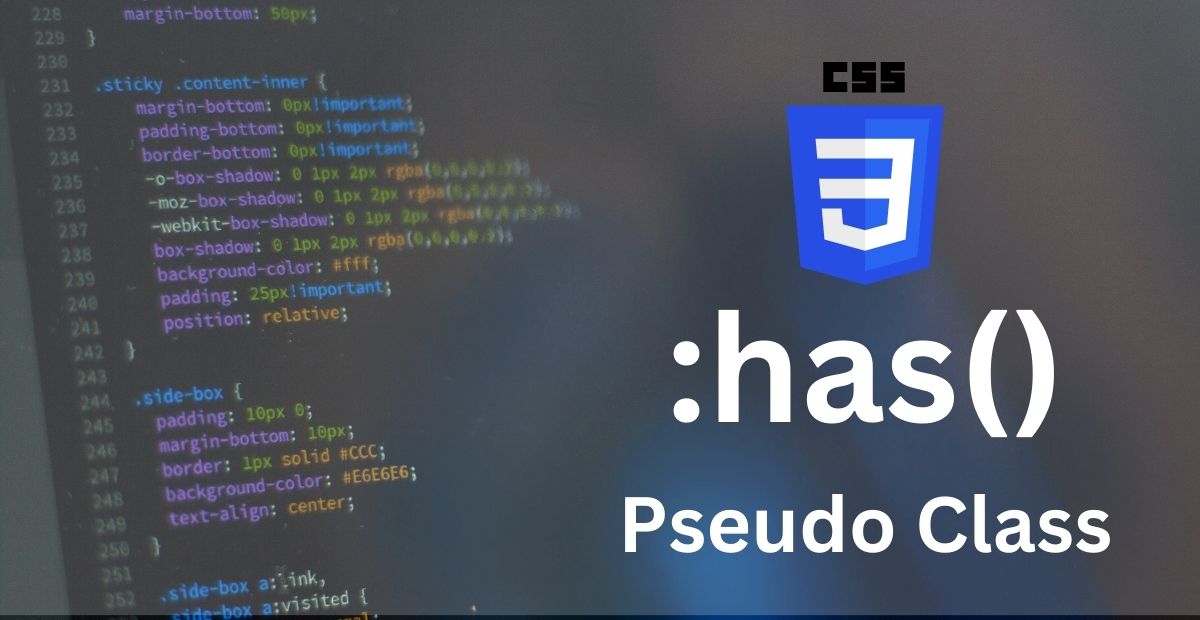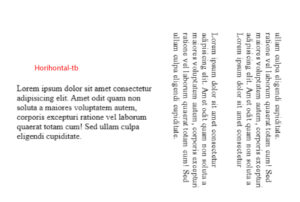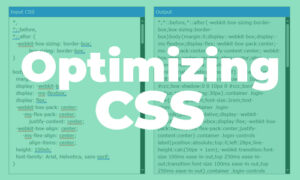Outline of the Article:
- Introduction to
:has()Pseudo Class- Brief explanation
- Importance in CSS selectors
- Syntax and Usage of
:has()Pseudo Class- Correct syntax
- How it’s used in selecting elements
- Limitations and browser support
- Examples of
:has()Pseudo Class- Simple use-case scenarios
- Advanced examples for clarity
- Best Practices for Using
:has()Pseudo Class- Efficient use in CSS
- Avoiding overcomplication
- Use Cases of
:has()Pseudo Class- Real-world applications
- Advantages in styling and code optimization
- Conclusion

Introduction to :has() Pseudo Class
CSS pseudo-classes are powerful tools in a web developer’s arsenal, enabling precise targeting of HTML elements for styling. One such pseudo-class that has garnered attention is the :has() selector. This pseudo-class offers a unique way to select elements based on their descendants, filling a gap in traditional CSS selectors.
Syntax and Usage of :has() Pseudo Class
The syntax for :has() involves the selector followed by parentheses containing another selector. For instance:
parent-selector:has(child-selector) {
/* CSS properties */
}
This enables the selection of elements based on the presence of specific descendants, making it useful for styling.
However, it’s crucial to note that as of writing, widespread browser support for :has() remains limited. Modern browsers are gradually incorporating support, but implementation might vary.
Examples of :has() Pseudo Class
Let’s delve into practical scenarios to understand how :has() works. Consider a situation where you want to style a list item only if it contains a specific element, such as a hyperlink.
/* Example */
ul:has(li a) {
/* CSS properties */
}
This would style the <ul> element if it contains an <li> with an <a> tag within it.
Best Practices for Using :has() Pseudo Class
While :has() offers versatility, it’s wise to use it judiciously. Overuse might lead to complex selectors that are hard to maintain. Instead, focus on targeted usage to streamline your CSS and improve readability.
Use Cases of :has() Pseudo Class
The :has() pseudo-class finds its application in various real-world scenarios. For instance, when designing a website with nested elements and specific stylings required based on these nested elements, :has() proves handy. Additionally, it aids in optimizing code by reducing the need for additional classes or complex selectors.
Conclusion
In conclusion, the :has() pseudo-class is a promising addition to CSS selectors, offering a unique way to target elements based on their descendants. Although its widespread adoption awaits better browser support, its potential for simplifying selectors and optimizing code makes it an exciting feature for web developers.
FAQs
- Is
:has()supported in all browsers?- As of now,
:has()has limited browser support and might not work across all browsers.
- As of now,
- Can
:has()be used with other CSS selectors?- Yes,
:has()can be combined with other selectors to create complex yet targeted styles.
- Yes,
- What are the limitations of using
:has()?- One limitation is its limited browser support, and it might also lead to complex and harder-to-maintain code if overused.\
- Does
:has()work with nested elements?- Yes,
:has()is particularly useful for targeting nested elements and their descendants.
- Yes,
- Is
:has()a replacement for other CSS selectors?- No,
:has()complements existing selectors and offers a new way to target elements based on their descendants.
- No,








